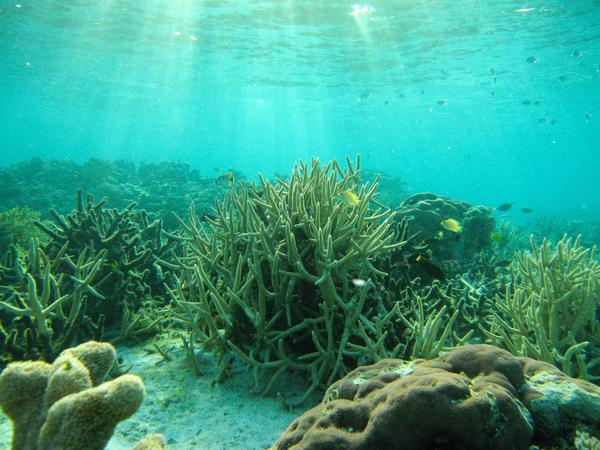Identifying super corals through DNA analysis

Selmoni will dive to collect underwater samples. © Jamani Caillet/EPFL 2018
A PhD student from EPFL will spend three months in New Caledonia for a research project supported by the International Coral Reef Initiative. He will share his experience on the EPFL Out There blog.
Oliver Selmoni, a second-year PhD student at EPFL, will have three months to collect 400 coral reef samples in New Caledonia. This French archipelago lies directly east of Australia and is surrounded by the second largest coral reef in the world after the Great Barrier Reef. Like so many other coral reefs, this precious ecosystem – which is a UNESCO World Heritage site – is under threat. On 20 February, Selmoni will join a research initiative launched by EPFL into how corals adapt to global warming, pollution and the anthropization of coastal areas. The project is being carried out in conjunction with the French National Research Institute for Sustainable Development (IRD – UMR ENTROPIE). He will post updates, photos and videos to the EPFL Out There blog and Instagram up until the end of May.
Link to the blog: #CoralSeaGenomics (New Caledonia)
Selmoni’s research project combines genetics and geography: he will apply a new scientific method known as seascape genomics to coral reefs. This approach uses DNA samples from coral to identify potential correlations between genetic variation and a particular environmental condition. By sampling individual specimens that may have been affected by the bleaching of two species of coral (Acropora millepora and Pocillopora damicornis), Selmoni hopes to discover genetic mutations that could enable coral to withstand global warming and ocean acidification. Coral specimens with this mutation could then be raised in a nursery and used to repopulate the damaged parts of reefs. By cross-referencing DNA and geographical data, Selmoni will also be able to map out the reefs surrounding the island, which is 300 kilometers long and 30 kilometers wide. This map will support the effort to develop conservation strategies and help identify where the super coral that Selmoni hopes to discover will be most effective when replanted. This project is one of six – chosen from among 230 proposals – to be supported by the International Coral Reef Initiative, a United Nations partner.
 Diving to extract DNA
Diving to extract DNA
Selmoni will spend the next three months diving for coral samples at around 20 sites. He will be assisted by a boat pilot and two professional divers. His research will take him to New Caledonia’s “customary” district, where the indigenous tribes will expect him to pay a traditional customs duty in the form of food and other goods in order to enter their territory. Between dives, the researcher will extract DNA in the lab, using equipment provided by the IRD’s center in the capital Nouméa. His work in New Caledonia will be overseen by Véronique Berteaux-Lecellier, a researcher in coral genetics at the French National Center for Scientific Research (CNRS) who is also his thesis co-director.
Selmoni completed a Master’s degree in bioinformatics at the University of Lausanne before embarking on his PhD research at EPFL in the Laboratory of Geographic Information Systems (LASIG), which is headed by research and teaching associate Stéphane Joost. Selmoni, who is from Lugano, first learned about coral bleaching and restoration during a two-month internship at a research center on Ko Pha-ngan island in the Gulf of Thailand. Recognizing the critical importance of this beautiful and complex ecosystem, he decided to devote his thesis to it.